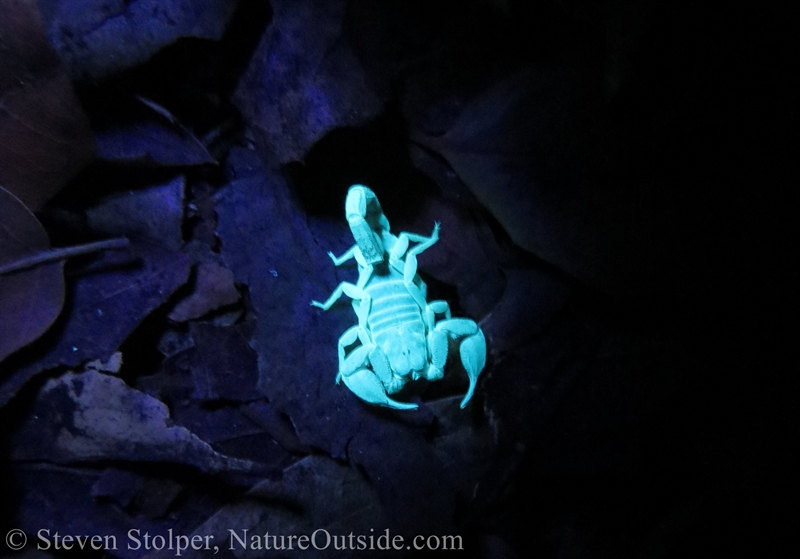
You may think there’s nothing to do when the sun goes down except crawl into your sleeping bag and slumber ‘til morning.
But you’re wrong!
There’s a host of wonderful activities you can do around camp at night. And one of the most exciting is to go on an ultraviolet hike.
What is an Ultraviolet Hike?
Hiking at night is a wonderful opportunity that too few of us partake. There is beauty in the night. It’s just a little harder to see (pun intended).
When you hike at night with an ultraviolet flashlight, you open a whole new world. It’s like having a superpower to see invisible creatures.
Ultraviolet flashlights emit UV radiation in the range of 300 – 400 nanometers. Humans cannot see ultraviolet light. But many animals can.
When UV light hits certain plants, animals, or minerals, the chemicals in them release visible light. This is not reflected light. The UV radiation actually excites the chemicals in the object, which release the visible light.
The effect can be spectacular. Whites, yellows, oranges, and greens illuminate the forest like bizarre Christmas decorations.
It’s something you just need to try.
Exploring the dark
A group of us meet at Henry Coe State Park. Henry Coe is the largest state park in northern California. It has more than 87,000 acres of wild open spaces. The terrain is rugged, with lofty ridges and steep canyons.
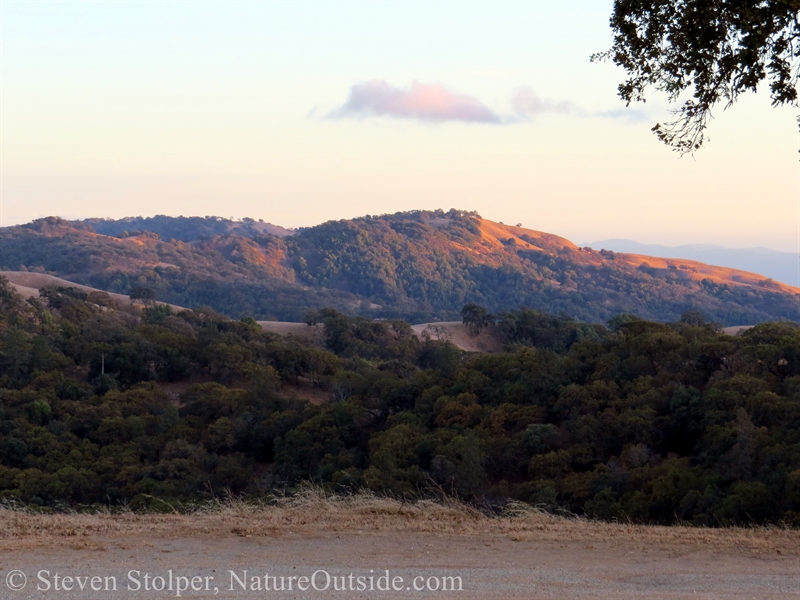
Hills in Henry Coe State Park
We wait until sundown to begin our hike. As we wait, we enjoy the spectacle of a beautiful sunset.
Each of us live through 365 sunsets every year of our lives. But most of us are too busy to witness this miracle of nature. How many sunsets have you actually experienced in your lifetime?
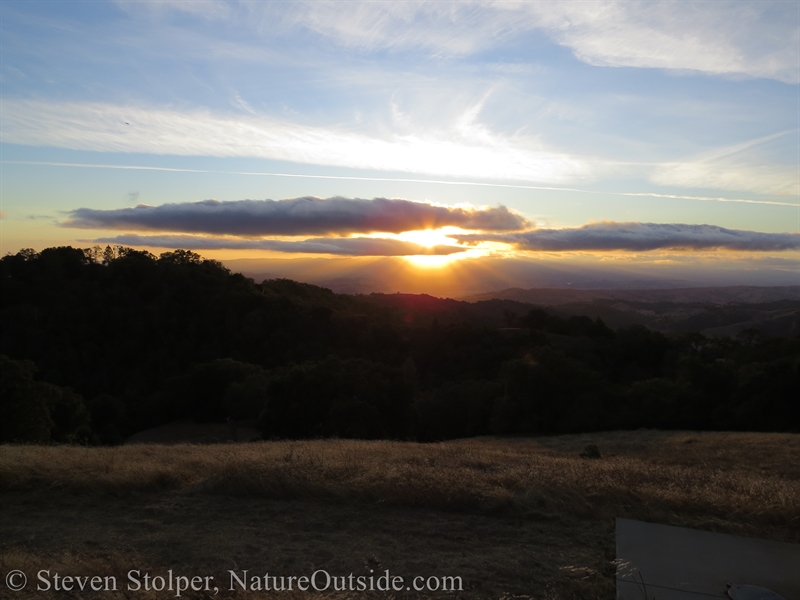
We enjoy an amazing sunset as we wait for our hike to start.
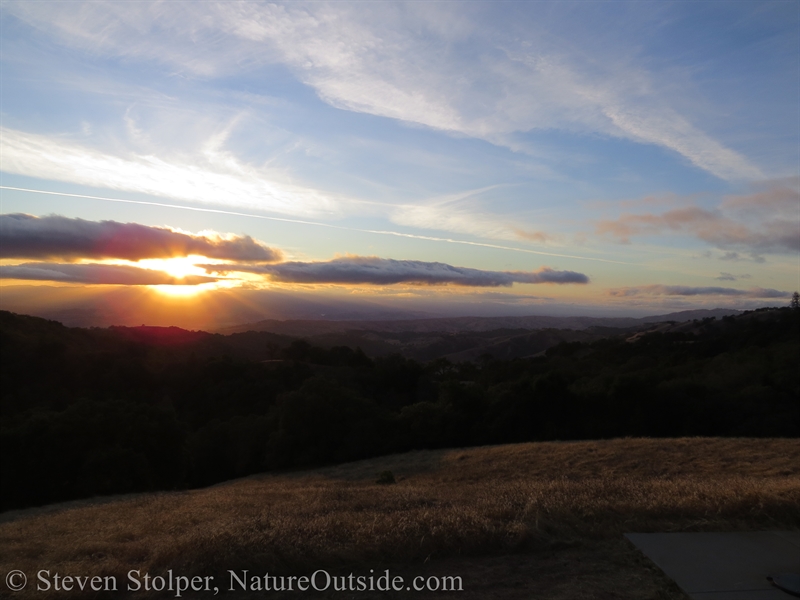
We’re treated to a spectacular sunset
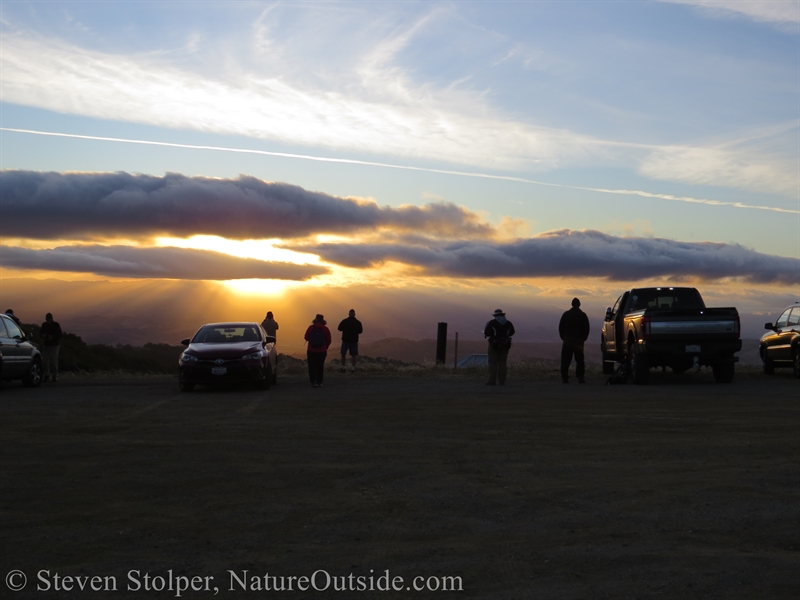
As the sun departs, we gather to begin our hike
Darkness falls as we set out. The oaks loom beside us like modern sculpture.
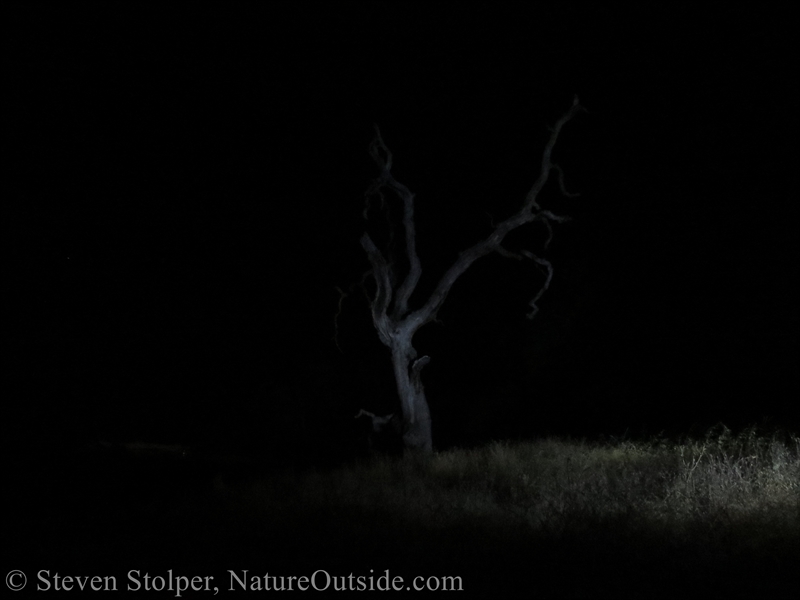
Majestic oaks rise out of the darkness
It’s a warm fall evening and I hike with a light fleece and windshell. I appreciate the beauty of the night. The sound of birds gives way to insect noises. But as I approach, the insects cease their concert. Stillness.
It’s an overcast night. Darkness swallows the forest. And I hike through a dreamlike landscape.
Ahead and behind me are circles of purple light. Several people have begun using their UV flashlights. The indigo and violet light that I see is “waste” from their UV sources.
In fact, everyone is cautioned not to shine the UV flashlights in peoples’ faces. The UV can cause permanent damage to our retinas. And the UV rays can also cause sunburn if you shine the flashlight on your skin.
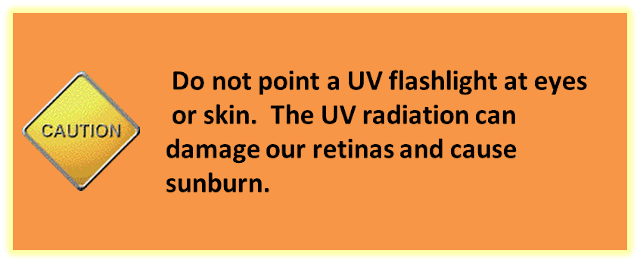
We’re never alone when we hike in a forest. There are always hundreds, if not thousands of organisms within 10 feet of us.
The UV flashlights remind us of this as they begin to reveal hidden creatures.
Scorpions
Scorpions fluoresce under ultraviolet light. To me, they glow white with a greenish tint. The glow comes from a substance found in the tough coating in the scorpion’s exoskeleton called the cuticle.
There are many theories for why scorpions have this substance. It may protect scorpions from sunlight. Or, it may help them find each other. There is also the possibility it might confuse their prey. A final theory is that it allows the scorpions to sense daylight/night by the amount of UV radiation that falls on them.
When we started our hike, I was concerned that we wouldn’t find any scorpions. I needn’t have worried. There are an astonishing number of scorpions right on the trail.
My pictures are a bit blurry because I am hand-holding my camera. Next time, I will bring a tripod.
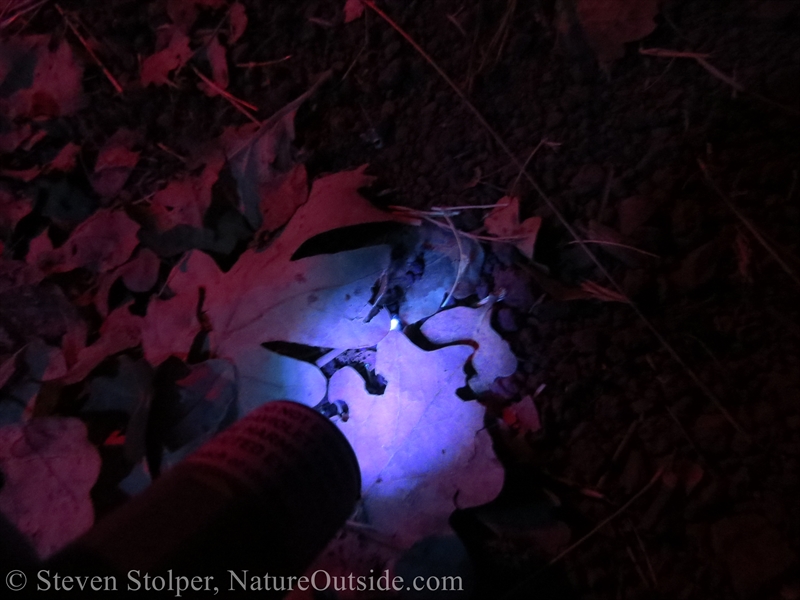
Scorpion hiding under leaf litter. Can you see it fluorescing white?
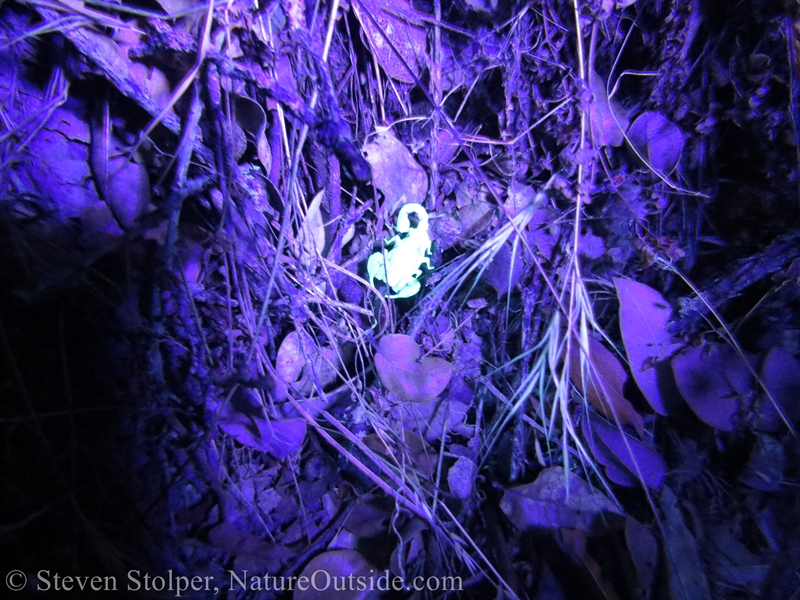
Scorpion revealed!
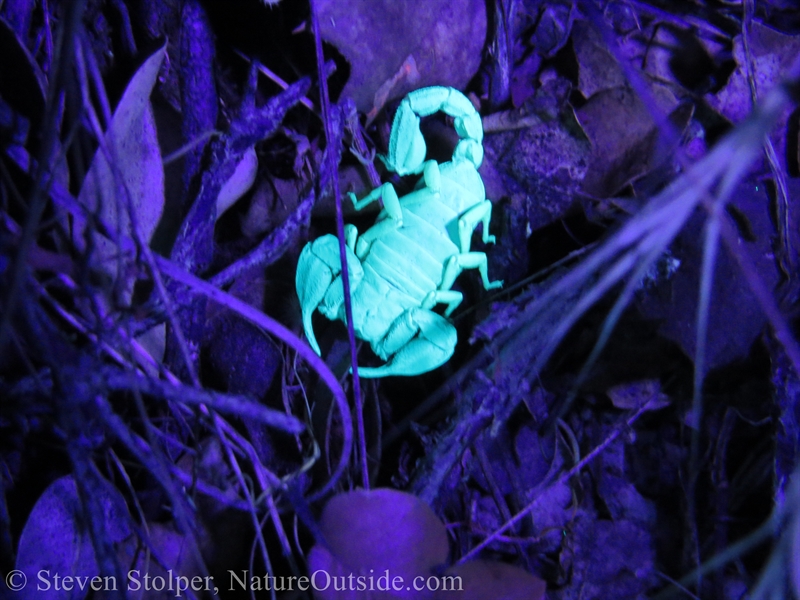
The scorpion is not reflecting light, the UV flashlight is stimulating chemicals in the exoskeleton to produce visible light.
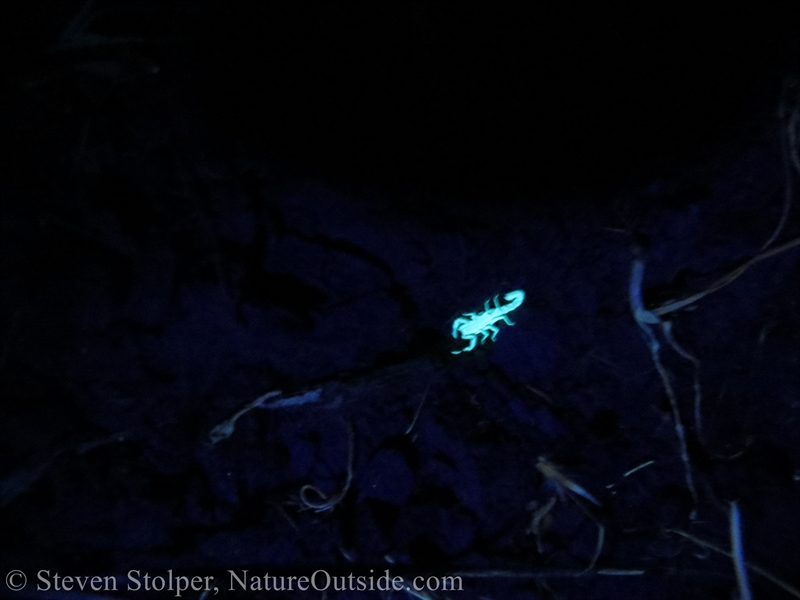
Scorpions pop out of the darkness as we scan with our UV flashlights.
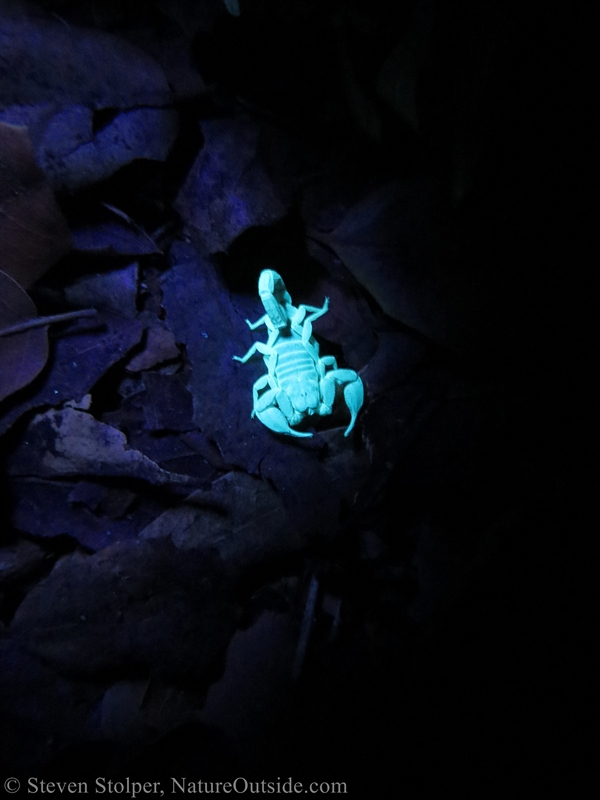
Here I am!
Plant Seeds
We also find mysterious orange orbs. We think they’re plant seeds. But from what plant?
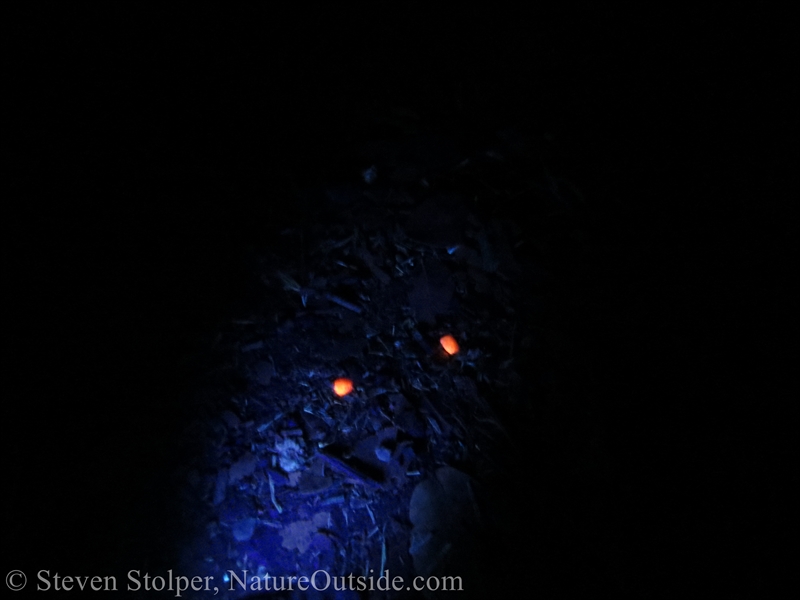
Mysterious plant seeds fluoresce orange.
Insect Eggs
Occasionally, we spot eggs, fluorescing white under UV. We don’t know what creature laid the eggs. But we suspect spiders.
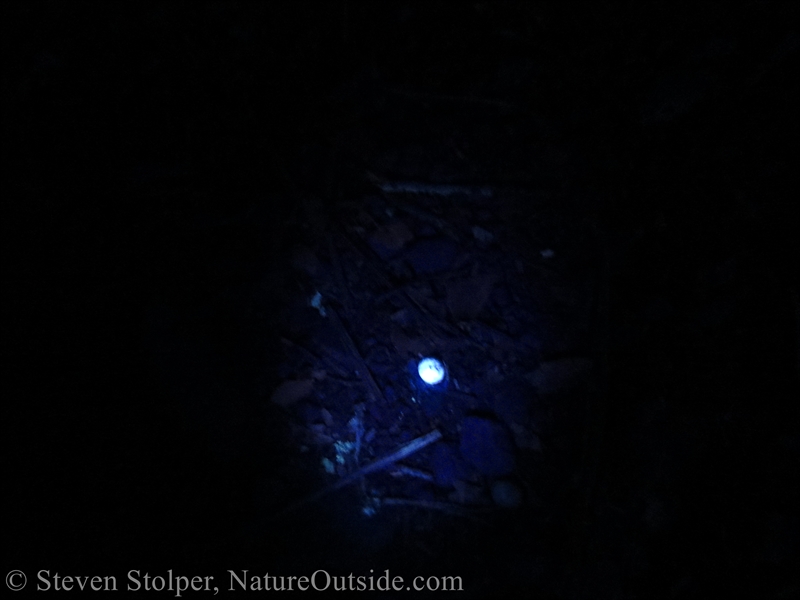
Unknown insect or spider egg fluoresces white against the dark ground.
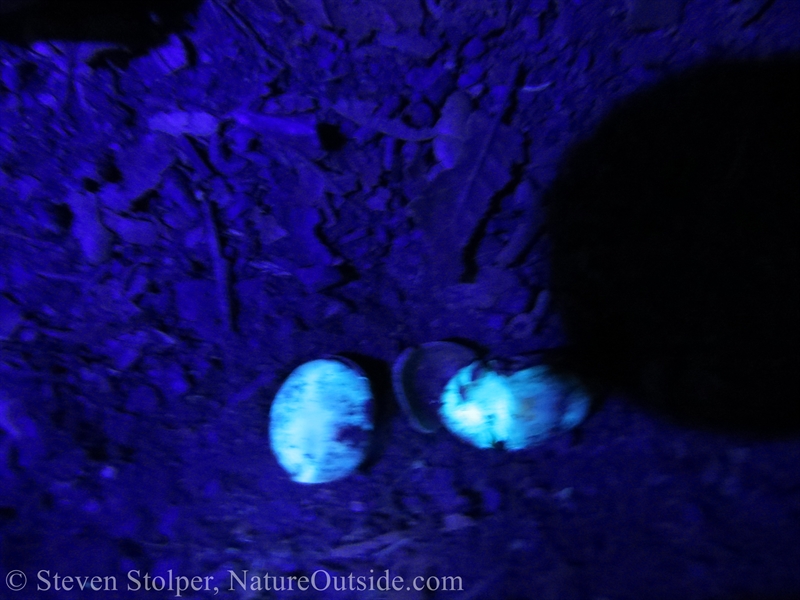
A closer look at the insect or spider eggs
Lichens
We find lichens on wood and rock that fluoresce under our lights. I love the brilliant orange. It looks like art.
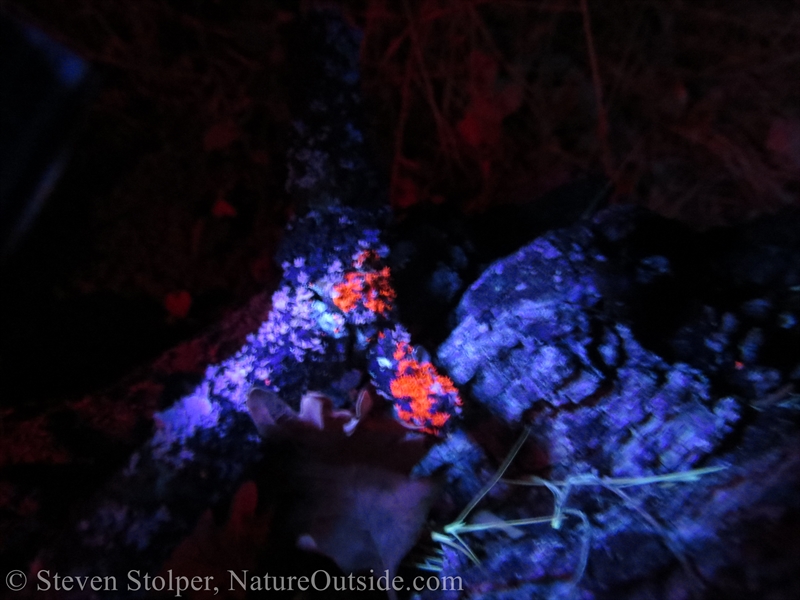
Lichens fluoresce a variety of colors under UV light.
Mystery Moth
Unexpectedly, a moth lands at our feet. To my amazement, it also fluoresces under my light.
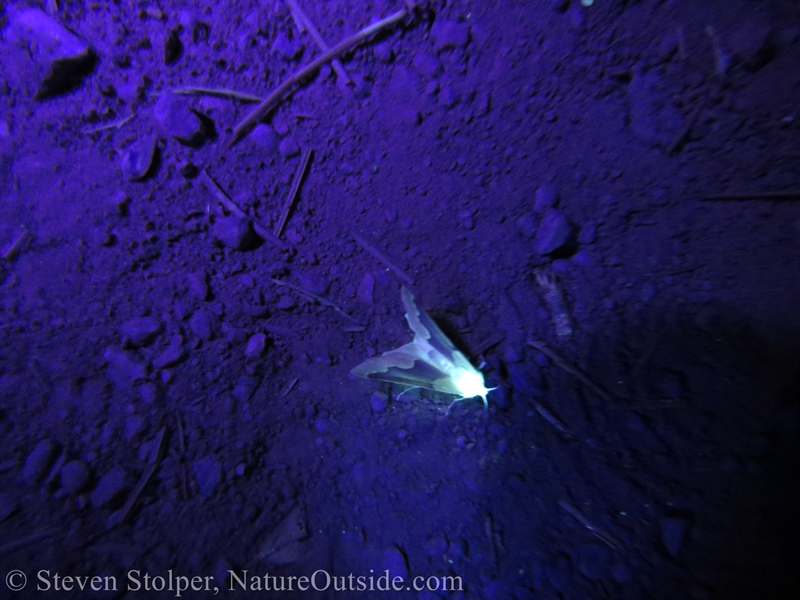
It was a treat to see this moth fluoresce under UV light.
Night Hiking Tips
Hiking at night introduces some unique problems. Make sure you bring a regular flashlight or headlamp to navigate and avoid hazards. Carry warm clothing, because temperatures drop at night. And keep track of your location. It is easier to become confused when you don’t have landmarks to guide you.
In many locations, there won’t be creatures that fluoresce under UV. So do your research to know where to go.
Have you done an ultraviolet hike? Tell me about it in the comments below.
Related Articles on NatureOutside
Moths – Amazing Creatures of the Night!
Lost While Hiking – What to do if you become lost in the wilderness
For fun facts and useful tips, join the free Bushcraft Newsletter.



I like this, and usually there is not a lot of concise content on this, except from different sites.
Glad to see someone else has done this kind of thing. I will be presenting to a regional workshop on this every thing and would love to use some of your materials and information.
When I do mine I/we also add bat detection, owl watch and some other stuff, just in case there is no “glowy” stuff that time of year or weather or temperature issues exist.
As far as the centipedes I mentioned in my comments on FB, I have found that some times during the year their legs do not fluoresce. I don’t know if it is a weather thing or maybe a mating thing.
Thanks for this.
Jerrel Geisler
Outdoor Ed. Coordinator
Kickerillo-MIscher Preserve, Harris County Prct. 4
Houston, Texas
Jerrel, good luck with your presentation. It sounds like a fantastic talk!
I’ll keep an eye on my local centipedes and try and notice if there are times their legs don’t fluoresce. With scorpions, when they have just molted and their exoskeletons are not hard, they do not fluoresce.
I’m planning a night hike in NE Ohio in a few weeks. Do you have an recommendations for black light flashlights?? Thank you!! This page was really helpful.
Renee, my answer is a little bit late. The UV flashlight I use and am very happy with is the “LIGHTFE Black Light UV Flashlight 365nm Blacklight UV301D with LG LED Source, Black Filter Lens, Max.3000mW” It is a little more expensive than most but I think it works well. You can find it on the big online retailer named like the river in South America that is the largest river by discharge volume of water in the world.
Thank you for this interesting article on UV night hikes. There is a recent article in The Guardian about night hikes with UV torches and it prompted me to check them out. I would like to buy a not too expensive UV Flashlight for my grandchildren (actually for their parents, as the is some danger in letting kids use them). Can you recommend some for me to consider, with appropriate specs, of course! Many thanks!
Judith, there are two important factors. The flashlight needs to produce light in the proper frequencies. A very good frequency for seeing scorpions is around 395nm. You also don’t want an inefficient flashlight that produces a lot of visible light but not much UV light. Inexpensive UV flashlights often do this.
The UV flashlight I use and am very happy with is the “LIGHTFE Black Light UV Flashlight 365nm Blacklight UV301D with LG LED Source, Black Filter Lens, Max.3000mW” It is a little more expensive than most but I think it works well. You can find it on the big online retailer named like the river in South America that is the largest river by discharge volume of water in the world.